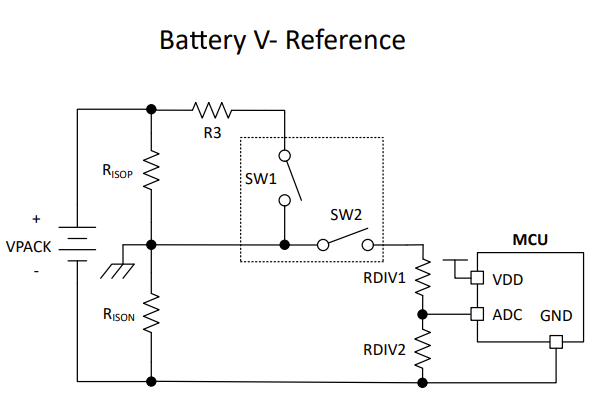Tool/software:
Hello,
In the datasheet of TPSI2072-Q1, you are presenting 2 different topologies for the monitoring of the insulation resistance (Battery V- reference or Chassis Ground reference). I am interested in the Battery V- reference design, using a B79631 as suggested in the datasheet. However, there are no example providing typical values for Rdiv1/Rdiv2 or R3. Could you elaborate on how to compute those values and select correct resistors for this ?
Thank you very much,
Colin.

